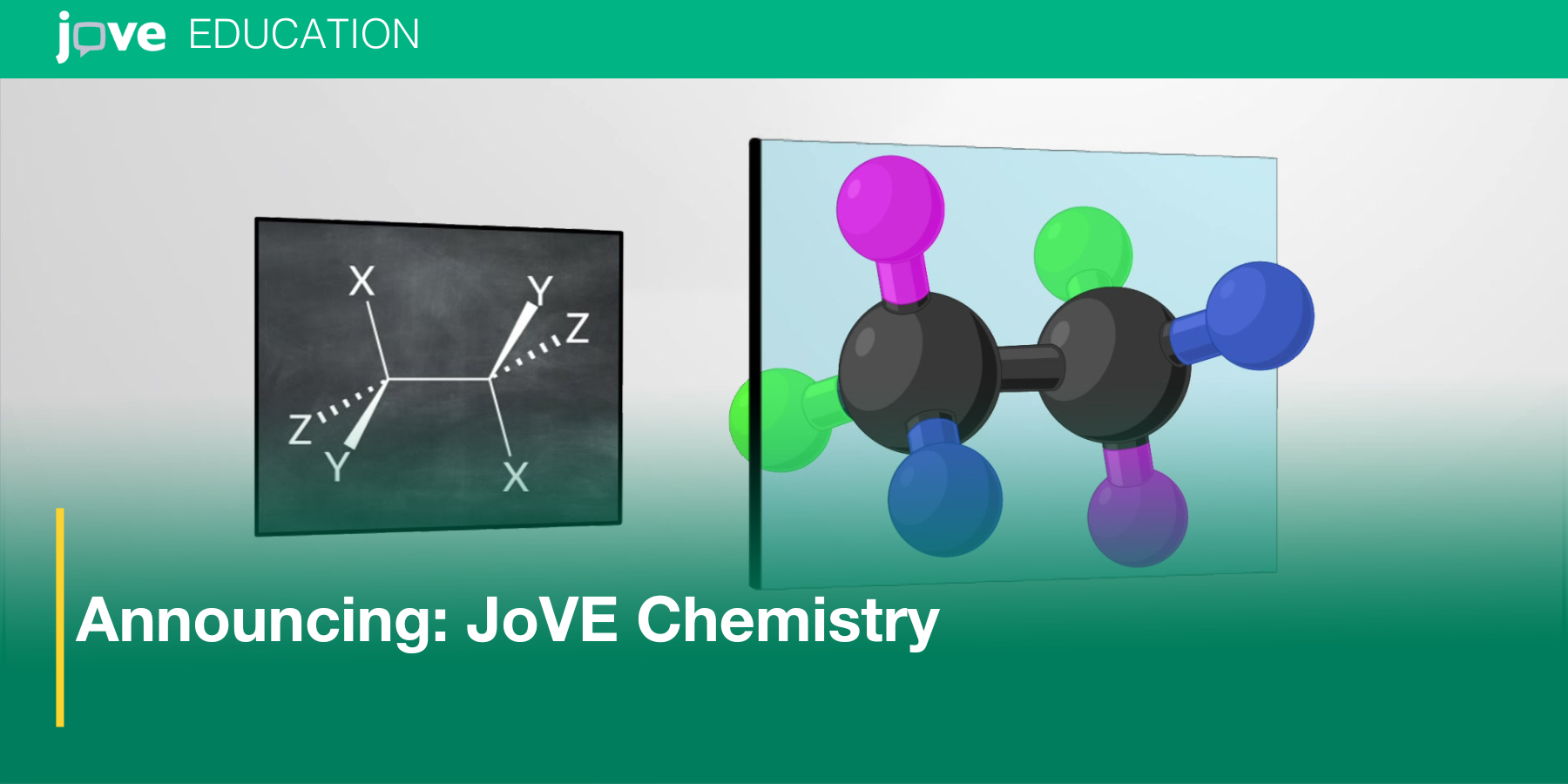Since 2006, JoVE has brought high quality video articles to the biological sciences community. Currently, JoVE publishes high quality scientific video protocols in the areas of neuroscience, general biology, bioengineering, immunology and infection, clinical and translational medicine, and applied physics.
Today, February 4, 2013, JoVE proudly launches its 7th section: JoVE Chemistry. Following its successful introduction of video publications for the biological and physical sciences, JoVE received numerous requests for a chemistry counterpart. In response, the journal is launching a new section, JoVE Chemistry dedicated to visualized publication of experiments across different areas of chemistry research including organic chemistry, chemical biology, electrochemistry, and polymer chemistry, among others. Check out our Chemistry announcement here:
"Similar to research in biology and physics, experimental research in chemistry suffers from a lack of reproducibility that can be solved by visualized publication. Therefore, it is natural to expand JoVE's novel publication approach to chemistry as well", says Moshe Pritsker, the CEO and co-founder of JoVE.
The debut article in JoVE Chemistry (embedded below) features a novel experimental approach to investigate antifreeze proteins using a device known as the nanoliter osmometer. This video article was filmed at the laboratory of Dr. Ido Braslavsky at the Hebrew University of Jerusalem in Israel. Explaining the function of antifreeze proteins, Dr. Braslavsky says: "When an antifreeze protein binds to an ice crystal, the protein inhibits growth of ice and lowers the melting point. This creates a difference between the melting and freezing point of ice known as thermal hysteresis."
By studying the properties of ice-binding proteins and thermal hysteresis, scientists gain insight into how arctic organisms can survive freezing temperatures without cellular destruction. Ice binding proteins are already used in hypothermia therapy, cryosurgery, the making of low-fat ice cream, and the lengthening of shelf life in frozen foods.
Dr. Braslavsky tells us, "I am studying the potential for antifreeze proteins to be used in cryopreservation. If we can learn from nature how to freeze or survive freezing better, we can use these strategies to extend our own lives." He also explains that, "chemistry is highly visual, and contains a lot of microscopy and reactions that change color when complete. By putting these aspects of chemistry in the forefront of publication and demonstrating the experimental steps, JoVE will become invaluable to chemists and make hard-to-learn techniques reproducible."
"JoVE pays tribute to the central science with the opening of the newest section, JoVE Chemistry," says Alexa Meehan, the JoVE's Deputy Editorial Director. "This highly anticipated addition will facilitate the experimental research in one of the purest sciences and will further a transition of JoVE from a biological journal into a platform video journal for all scientific disciplines."

